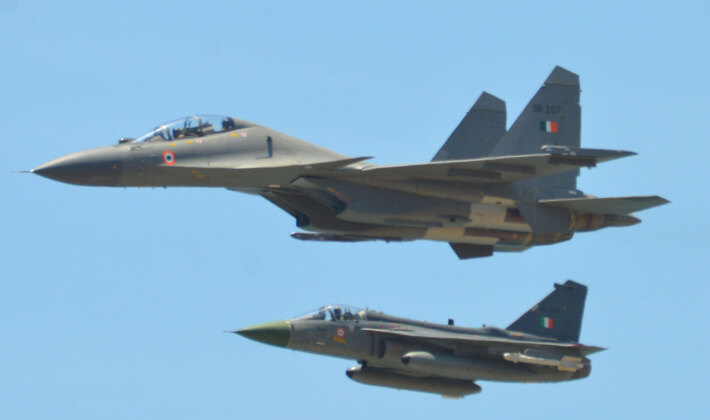News
More Expensive Than the Su-30: India Places Largest Order For Tejas Light Fighters
The Indian Defence Ministry has signed contract valued at Rs 62,370 crore, or approximately $7 billion, to procure 97 Tejas Mk1A lightweight fighters, representing the largest order the troubled and long delayed program has ever received. The order will finance the procurement of 68 single seat and 29 twin seat variants of the aircraft, with its signing closely coinciding with the phasing of the Tejas’ direct predecessor, the MiG-21, out of service on September 26. Deliveries are scheduled to begin in 2027–2028, with the new variant of the Tejas having slightly improved avionics over prior models. The Tejas made its first flight on January 4, 2001, with the program dating back close to 40 years. The first aircraft were only accepted into service in February 2019, 18 years after the type’s maiden flight, with a limited interim combat capability.

The Tejas’ cost overruns have made it among the most expensive fighters from its weight and thrust range, with a cost over double that of the similarly capable Chinese JF-17 Block III being procured by neighbouring Pakistan and Azerbaijan. Primary drivers of its high cost include lower efficiency levels seen in the Indian combat aviation sector, as well as the particularly high costs of the aircraft’s American F404 engine and Israeli avionics suite. At approximately $72 million per aircraft, the fighters are significantly more costly than Russian built Su-30MKIs that form the backbone of the Indian fleet, although the cost of Su-30s built under license in India is significantly higher at close to $90 million. This is despite the Su-30MKI being a far larger aircraft with over twice the weight, three times the engine power, and a radar close to four times as large. Despite its considerable procurement cost and currently limited combat potential, as a very lightweight aircraft the Tejas’ sustainment costs and maintenance need remain low, with availability rates expected to be high after entering service on a large scale.












